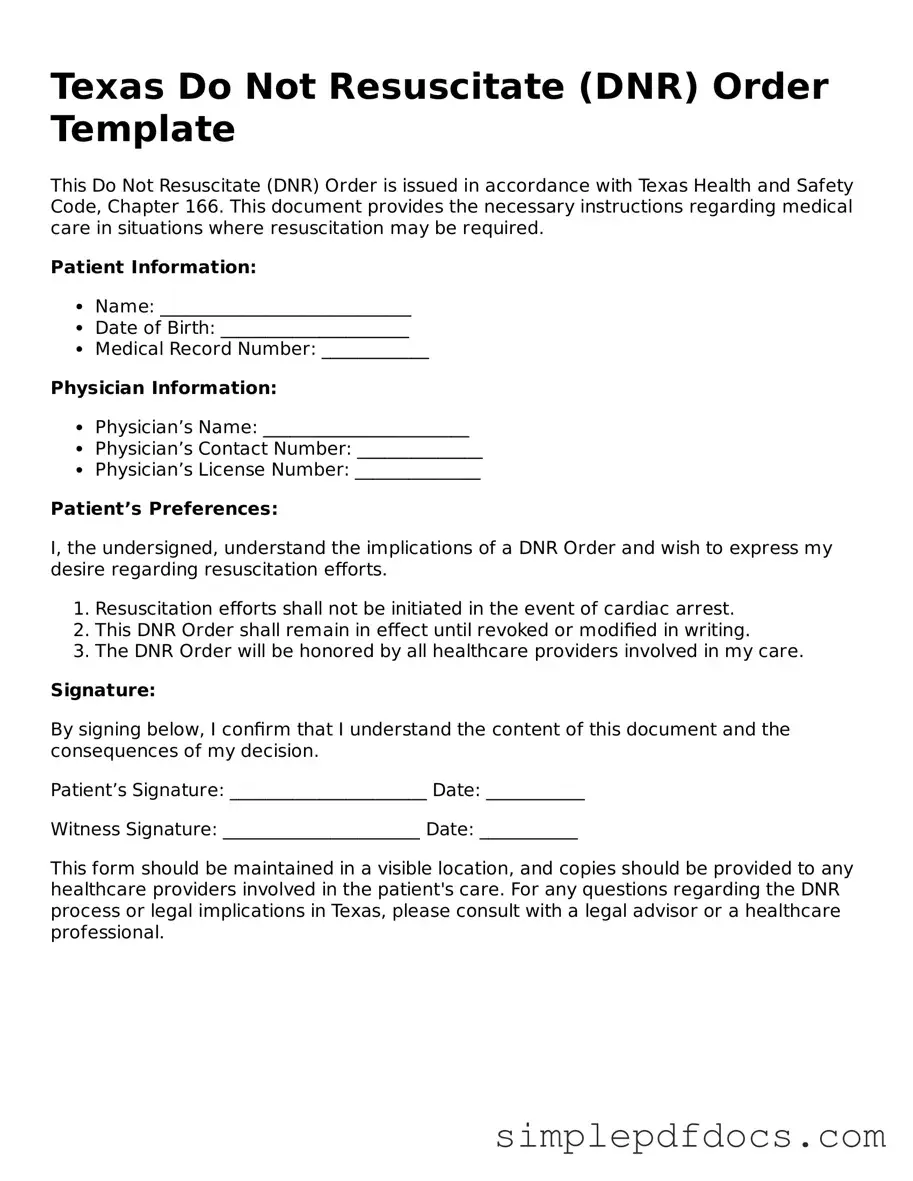Legal Do Not Resuscitate Order Document for the State of Texas
A Texas Do Not Resuscitate Order (DNR) form is a legal document that allows individuals to express their wishes regarding medical treatment in the event of a cardiac or respiratory arrest. By completing this form, a person can indicate that they do not want resuscitation efforts, such as CPR, to be performed. This decision can provide peace of mind for both the individual and their loved ones during difficult times.
Get Document Here
